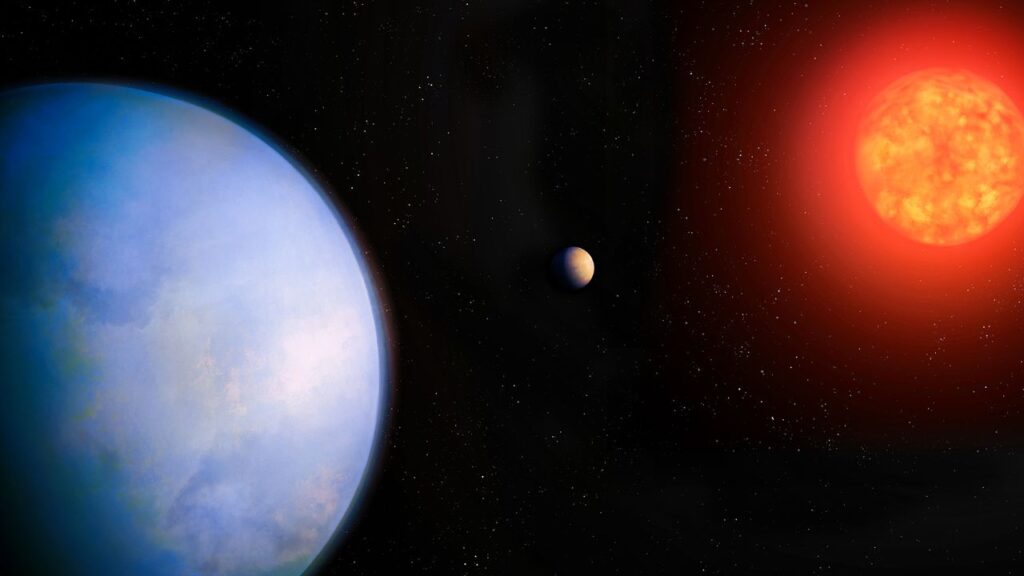
A newly discovered super-Earth, designated GJ 251c, has been located in the habitable zone of its host star, just 18.2 light-years away in the constellation of Gemini. This finding positions GJ 251c as one of the most promising candidates in the ongoing search for extraterrestrial life beyond our solar system. The planet boasts a mass approximately four times that of Earth, classifying it as a super-Earth, a term used for rocky planets larger than our own.
Suvrath Mahadevan, a professor of astronomy at Penn State University, noted the significance of this discovery, stating, “While we can’t yet confirm the presence of an atmosphere or life on GJ 251c, the planet represents a promising target for future exploration.” The habitable zone, often referred to as the Goldilocks zone, is the region around a star where conditions are suitable for liquid water to exist, a crucial factor for life as we know it.
Detection Process and Challenges
The identification of GJ 251c was made possible through over 20 years of observational data, during which astronomers analyzed the slight wobble of the parent star caused by the gravitational pull of the planet. This wobble results in a Doppler shift in the star’s radial velocity, a phenomenon measurable with a spectrograph.
In addition to GJ 251c, another planet in the system, GJ 251b, was discovered in 2020. It orbits its star every 14 days at a distance of 7.6 million miles (approximately 12.2 million kilometers). A team of astronomers, including Mahadevan, utilized archived data from telescopes worldwide to refine the radial velocity measurements for GJ 251b. They then combined this refined data with new observations from the Habitable-Zone Planet Finder (HPF) on the Hobby-Eberly Telescope in Texas, which led to the confirmation of GJ 251c’s signal.
The detection process was not without its challenges. Stars exhibit a variety of activities, including convective motions and flares, which create a noisy background that complicates the detection of subtle planetary signals. Mahadevan described this as a “hard game,” emphasizing the complexity of isolating the planetary signal from the stellar noise.
Future Exploration and Potential
With GJ 251c identified, astronomers are now strategizing future observations. The planet’s distance from its star suggests that it may be too far for the James Webb Space Telescope (JWST) to effectively search for atmospheric signs. Future telescopes, particularly the next generation of 30-meter-class telescopes, may have the capability to detect the planet’s atmosphere through reflected light. However, full characterization of GJ 251c may require the planned Habitable Worlds Observatory, expected to launch in the 2040s.
While Mahadevan describes GJ 251c as “one of the best candidates in the search for an atmospheric signature of life,” there are significant considerations regarding its host star. GJ 251 is a red dwarf with only 36% of the mass of our Sun, known for its violent eruptions and powerful flares. These stellar activities can strip away a planet’s atmosphere over time, raising concerns about the viability of Earth-like conditions on planets orbiting red dwarfs.
Despite these challenges, GJ 251c’s position further from its star than many other habitable zone planets around red dwarfs may afford it some protection. Its slightly more massive star could mean a hotter temperature, which pushes the habitable zone outward. If GJ 251c possesses a robust atmosphere and strong magnetic field, it might withstand the star’s aggressive stellar wind.
As researchers continue to gather data and refine their understanding, Mahadevan remarked, “We made an exciting discovery. But there’s still much more to learn about this planet.” The findings were officially reported on October 23, 2023, in The Astronomical Journal, marking a significant step forward in the quest to discover life beyond Earth.






